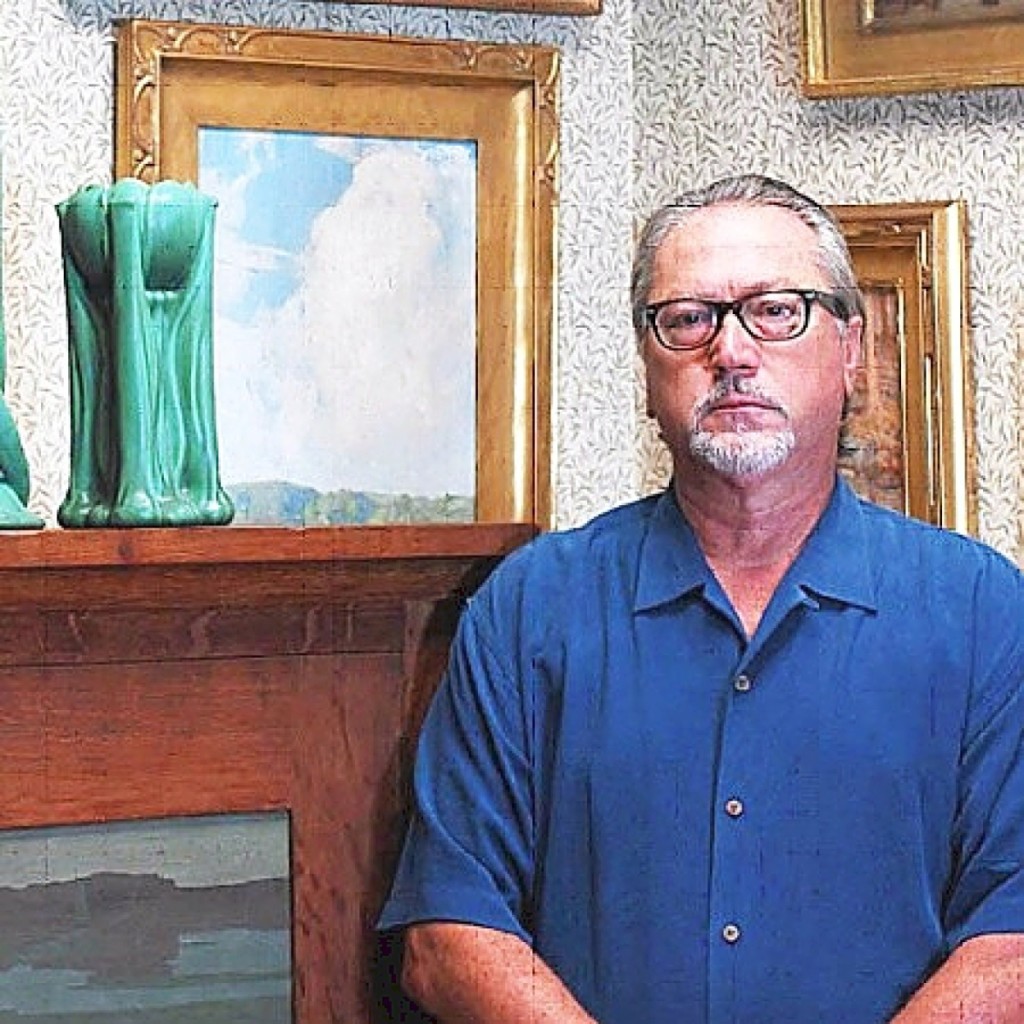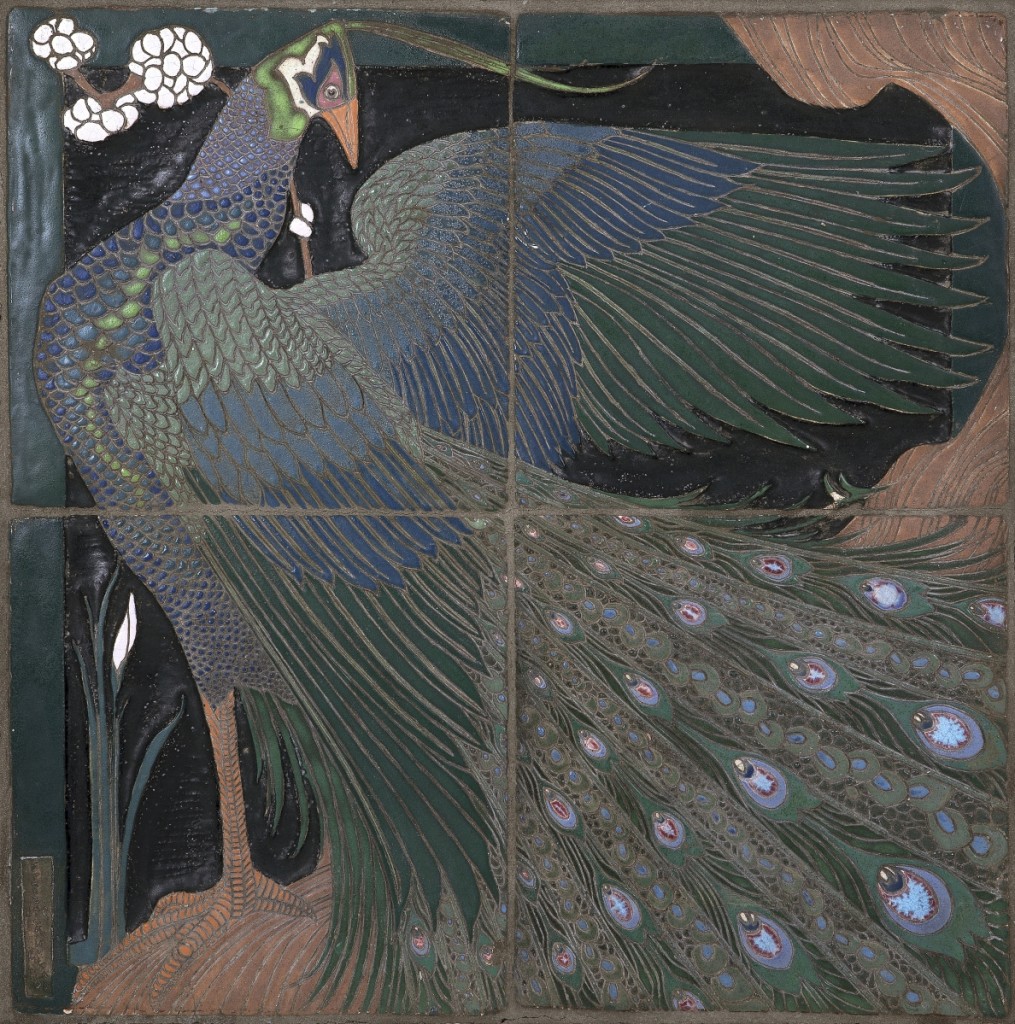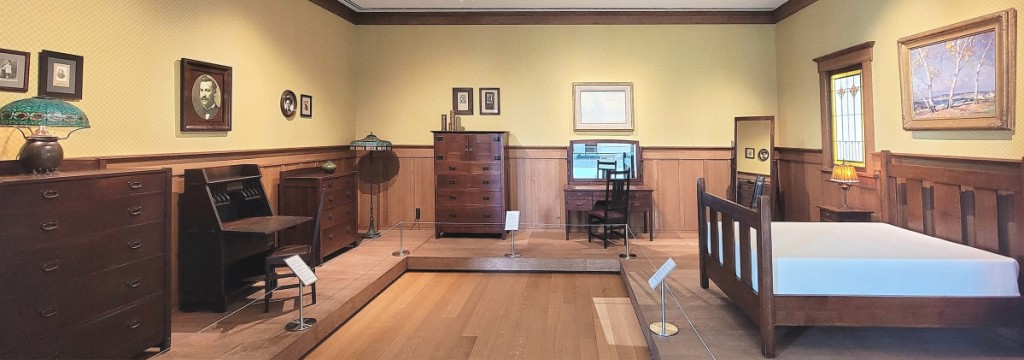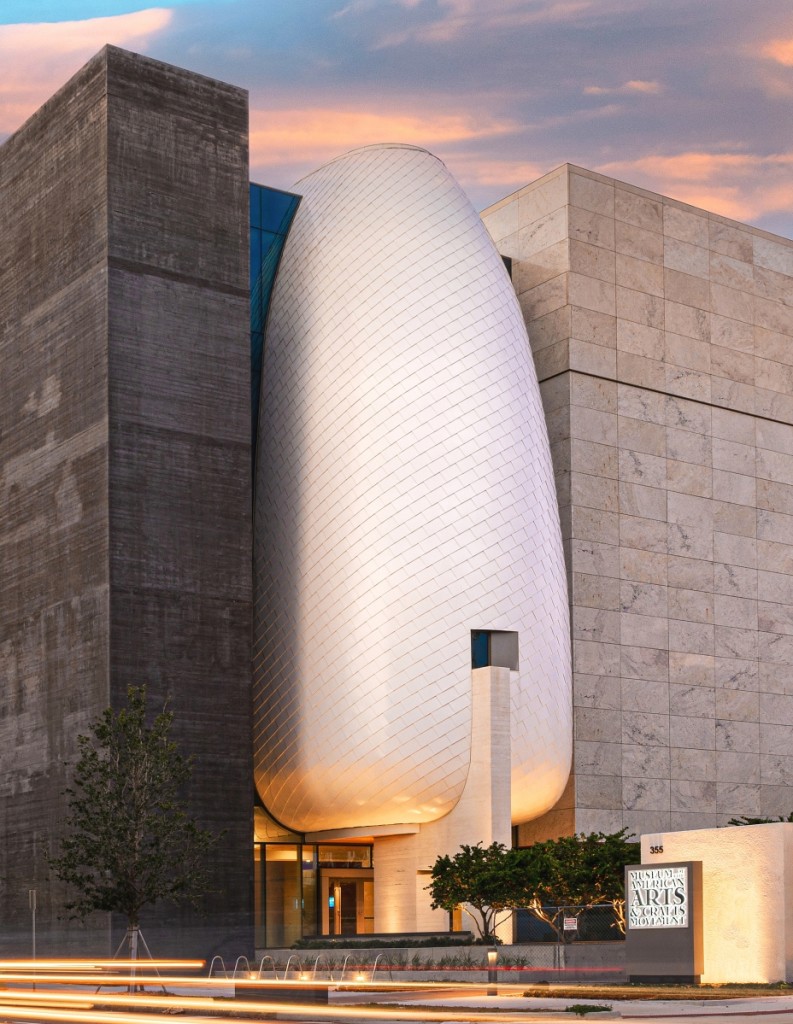By W.A. Demers
ST PETERSBURG, FLA. – There is lots to do in St Pete on Florida’s gulf coast. Part of the Tampa Bay area, “Sunshine City,” as it’s nicknamed, is a mecca for golfing, boating, fishing and beachgoing. Culturally rich, too, it hosts the Dali Museum with its Surrealist works of art, as well as the Museum of Fine Arts, with works ranging from ancient to contemporary. Now you can add one more visitor magnet to the list – the long-anticipated Museum of the American Arts and Crafts Movement (MAACM), which opened its doors to the public on September 7.
Unlike most American cultural institutions, MAACM is the realized ambition of one man. Rudy Ciccarello, local businessman, philanthropist and collector for many years at The Red Roses Foundation (TRRF), had a singular vision to create a museum dedicated to the movement that swept the United States between about 1890 and 1930. Showcased here are choice examples of the fine and decorative arts from this period, whose hallmarks were handcraftsmanship with simple and functional designs.
When Rodolfo Ciccarello arrived on American shores from Rome in 1968, his career trajectory appeared to be diplomatic, beginning in Boston at the Italian consulate. His interests took him elsewhere, however. In Boston he enrolled first at Boston University where he earned a BA, and then to Northeastern University’s School of Pharmacy where he was awarded a bachelor of science degree. From Boston he headed to Florida to a job at the Jack Eckerd Corporation, at the time the largest US pharmacy chain, and for which he developed a home infusion service. Three years later, he founded Florida Infusion Services, the great success of which brought him numerous distinctions and awards. It also allowed him to pursue his collecting passion: the American Arts and Crafts Movement.
When asked what he believes to be the mission of MAACM, Ciccarello replies, “Our mission is to promote the understanding of the American Arts and Crafts Movement through the acquisition, conservation, preservation, exhibition and interpretation of the decorative and fine arts. We strive to stay focused on these objectives every day.”

Philanthropist and collector Rudy Ciccarello has founded the only museum in the world dedicated exclusively to the American Arts and Crafts Movement.
And the showcase is itself a showcase – a decidedly modern jewel box arising in St Petersburg’s bustling downtown waterfront arts district. On a Facebook group devoted to the Arts and Crafts Movement, a post about the museum’s imminent opening generated some uncharitable comments, with one poster writing snarkily, “I wasn’t aware that Brutalist concrete and walls of glass were hallmarks of Arts and Crafts.”
Ciccarello chose to work with award-winning, Tampa-based architect Alberto Alfonso to design the 137,000-square-foot building, which is a work of art itself. “The collaboration with Alberto was one of the truly rewarding experiences of my life,” Ciccarello told Antiques and The Arts Weekly. “We developed an amazing working relationship based on trust and understanding that has also developed into a close, personal friendship. We worked together, shoulder to shoulder, on virtually every aspect of the concept design of MAACM. Egos were left at the door. Every detail was considered, every major decision was made together from creative to construction and installation. I couldn’t be more pleased and prouder of the result.”
Ciccarello, indeed, disagrees with the premise that the museum’s architectural style is so different from the aesthetics of the American Arts and Crafts Movement. “When we considered the concept and design, it was important that the building have a contemporary look but at the same time embrace the basic tenets of the Arts and Crafts Movement; the use of natural materials, craftsmanship, form and function. For example, the dramatic exterior ovoids, thousands of square feet of American white oak flooring – the favorite of A&C artisans – a massive spiral staircase with Venetian plaster applied by hand that is our interpretation of the iconic Glasgow Rose, the FLW-influenced stained glass skylights and many other examples provide a seamless transition that celebrates the old and the new.”

Frederick Hurten Rhead, “Peacock,” 1910, four-tile panel, Art Academy of the People’s University, 20¾ by 20¾ inches.
The expansive museum includes more than 40,000-square-feet of gallery space, as well as an outdoor garden with period tiles and fountains. In addition to galleries, MAACM has an education studio, graphic studio, retail store, research library, theater, event space, café and destination restaurant. The multi-story structure, flanked by a four-story 300-car parking garage, includes exhibition galleries, as well as additional spaces for special exhibitions and social events. A 100-seat auditorium, a library specializing in mid-Twentieth Century design and architecture, gift shops and bookstore are all part of the mix.
The space truly works when one enters the museum and sees the collection, with items like windows, fireplaces and tiles in room settings that are part of period installations incorporated into the interior design. A novelty, these installations incorporate room settings. “Creating period vignettes was always part of the master plan,” said Ciccarello. “It was important to provide installations that would give the visitor a very real sense of what life was like during the movement, highlighting the importance of the home, beauty and functionality. The bedroom vignette, the Iris Bathroom, the Greene and Greene entry hall, the boathouse floor, are all examples. We plan on introducing other examples in the future.”
In 2004, he donated the majority of his personal collection to the nonprofit TRRF that he created. While MAACM owns a number of objects, the vast majority of works of art displayed are from the TRRF collection. Explained Ciccarello, “The foundation owns approximately 2,000 objects from the period, allowing us to freshen the galleries with new pieces from time to time, many of which have not been seen in decades. We anticipate initially displaying approximately 800 works of art when MAACM opens its doors.”
Personally collected by Ciccarello over more than three decades, the objects represent the most noteworthy artists, craftsmen and companies with furniture, pottery, tiles, metalwork, lighting, leaded glass, woodblock prints, paintings and photographs. MAACM’s permanent collection galleries and exhibition spaces display works created by notable movement trailblazers, such as Gustav Stickley, Charles Rohlfs, the Byrdcliffe Colony, the Roycrofters, Tiffany Studios, Dirk van Erp, Grueby Pottery, the Saturday Evening Girls, Rookwood Pottery, Newcomb Pottery, Frederick Hurten Rhead, Adelaide Alsop Robineau and Arthur Wesley Dow.

Visitors to MAACM’s galleries have the rare opportunity to experience a variety of immersive Arts and Crafts Movement installations. Room recreations, such as this period bedroom, combine select collection pieces to surround visitors in a complete Arts and Crafts environment.
Two temporary exhibitions have been mounted to illuminate the movement and its lasting legacy. “Love, Labor, and Art: The Roycroft Enterprise,” currently on view through January 9, showcases more than 75 works made by the Roycroft community, including printed books, furniture, lighting, metalwork and more. “Lenses Embracing the Beautiful: Pictorial Photographs from the Two Red Roses Foundation,” another opening exhibition, features more than 150 pictorial photographs and rare books from around the world. These carefully composed, camera-generated images mimic the appearance of paintings through hand-manipulated effects, reflecting the larger Arts and Crafts context.
Ciccarello says MAACM is not just an island for Arts and Crafts aficionados. “We have spent months developing robust programming that will engage the entire community. From Family Days to a movie series, to lectures, readings and demonstrations, there will be something for everyone. Children have taken a special place in the planning with surprises that I will announce at a later date,” he said.
Also on offer are the amenities that the museum-going public expects these days. “I wanted the museum to offer guests a unique and entertaining experience and have paid great attention and detail to providing them wonderful amenities,” said Ciccarello. “Visitors can relax and have a quick bite or lunch in Arts Café, browse the MAACM Store, dine in the soon to open Ambrosia Restaurant, hold a special event, wedding or conference in the banquet space with adjoining art filled collector’s gallery and antique bar, take a class in one of our studios, or just relax on a bench in our beautiful outdoor green space surrounded by period fountains.”
The immersive art experience can also provide a unique venue for weddings, corporate affairs and social events. Its 3,700-square-foot banquet facility can accommodate up to 250 guests, a dance floor and a stage for live music. Adjacent to the banquet area is the art-filled Collector’s Gallery and the Vintage Bar, featuring an 18-foot Brunswick Mont Oro bar from 1900, antique breakfronts and handcrafted pub tables.
One wonders if the museum is the capstone to Ciccarello’s collecting. He assures us it is not. “I am constantly seeking new acquisitions that will enhance the collection and add to the visitor experience and to the history and importance of the movement. It has become extremely hard to find rare and iconic examples these days as the very best remain in the hands of private collectors and museums. That does not stop me from looking.”
The Museum of the American Arts and Crafts Movement is at 355 4th Street North.
For more information, such as pricing and hours of operation, or to reserve tickets, 727-440-4859 or www.museumaacm.org.










.jpg)









